by Christopher S. | Apr 10, 2025 | Android App Marketing |
In a world increasingly driven by voice commands, mastering voice search app optimization is no longer optional—it’s essential. As voice assistants like Siri, Google Assistant, and Alexa continue to shape user behavior, optimizing your mobile application for voice is the key to sustaining visibility and growing your user base. This guide breaks down everything needed to position your app at the top of voice-driven queries, leveraging mobile app voice SEO and enhancing your app voice assistant ranking.
Understanding Voice Search App Optimization
Voice search app optimization refers to the process of adapting your mobile application to be easily discoverable through voice-activated searches. Unlike traditional typed searches, voice queries are longer, more conversational, and intent-driven. To align with this shift, app developers and marketers must ensure their apps are voice-search-friendly both in content and structure.
Why Mobile App Voice SEO Matters
The rise of mobile app voice SEO coincides with the growth in smart devices and on-the-go users. Consider these facts:
-
Over 50% of smartphone users now utilize voice search regularly.
-
App discovery via voice commands is growing rapidly across Android and iOS platforms.
-
Voice assistants prioritize results that are fast, relevant, and contextually rich.
Optimizing your app to meet these standards increases organic reach, installs, and brand engagement.
Top Strategies for Voice Search App Optimization
1. Optimize App Title and Description with Conversational Keywords
Use long-tail, natural-sounding phrases in your app’s metadata. For example:
Make sure your voice search app optimization incorporates these conversational phrases in:
This improves voice assistant recognition and enhances app voice assistant ranking.
2. Implement Schema Markup and App Indexing
For Android and iOS apps, ensure your content is crawlable by search engines and voice assistants:
-
Use Firebase App Indexing for Android.
-
Leverage iOS Universal Links to link your app content with voice queries.
-
Add structured data using schema.org tags.
This helps assistants like Google and Siri extract meaningful info from your app, leading to better mobile app voice SEO performance.
3. Focus on Page Speed and Lightweight App Architecture
Voice search prioritizes fast-loading and responsive apps. Ensure:
-
Your app loads in under 2 seconds.
-
All scripts and APIs are optimized for minimal latency.
-
Assets are compressed and delivered efficiently.
Speed directly impacts your app voice assistant ranking because slow apps are deprioritized by voice algorithms.
4. Design for Voice Intent and Use Natural Language
Your app content should match the way people speak. Consider:
-
Using FAQs formatted with full questions and answers.
-
Creating voice-friendly content: “How can I learn French quickly?” not just “French learning.”
-
Embedding spoken commands that users might say to find your app.
This approach ensures better voice search app optimization and relevance to voice queries.
5. Encourage Voice-Based Reviews and Ratings
User-generated content also plays a major role in ranking. Prompt users to leave voice-activated reviews:
-
“Hey Siri, leave a review for [Your App Name].”
-
“Alexa, rate [App Name] five stars.”
These voice-initiated actions boost trust signals for voice algorithms, supporting both mobile app voice SEO and app store visibility.
6. Leverage AI-Powered Chatbots and Voice Interactions In-App
Integrate voice-based navigation and chatbots within your app to enhance the user experience. Not only does this improve retention, but it:
As a bonus, this boosts engagement—one of the indirect factors affecting app voice assistant ranking.
Common Mistakes in Voice Search App Optimization
Avoid these pitfalls that hinder optimization:
-
Keyword Stuffing: Voice search rewards natural language, not repetition.
-
Neglecting App Indexing: If your content isn’t indexed, it won’t show in voice results.
-
Ignoring Local SEO: Many voice queries are local (e.g., “best food delivery app near me”).
Be precise, targeted, and conversational for optimal results.
Tools and Resources to Help You Optimize
Here are some of the most effective tools for voice search app optimization:
-
Google Search Console – Monitor voice query traffic.
-
Answer the Public – Generate conversational keyword ideas.
-
Ubersuggest – Uncover long-tail search data.
-
Firebase & App Store Connect – For indexing and metadata tuning.
Utilizing these will support both your mobile app voice SEO and overall growth strategy.
FAQs About Voice Search App Optimization
1. What is voice search app optimization?
Voice search app optimization is the process of making your app content and metadata easily discoverable through voice assistants like Siri and Google Assistant.
2. How does voice search impact mobile app SEO?
Voice search introduces a more natural and intent-driven search behavior, requiring conversational content and structured data to enhance visibility.
3. How can I improve my app voice assistant ranking?
Focus on using long-tail conversational keywords, fast-loading content, user-generated voice reviews, and proper app indexing techniques.
4. Is mobile app voice SEO different from traditional SEO?
Yes, mobile app voice SEO focuses more on how users speak rather than type, requiring a different keyword and content strategy.
5. Can schema markup help in voice search optimization?
Absolutely. Schema markup provides structure to your content, making it easier for voice assistants to parse and deliver relevant results.
Conclusion: Elevate Your App’s Visibility with Voice Search App Optimization
The landscape of app discovery is evolving—voice search app optimization is no longer a futuristic trend, it’s a present-day necessity. By adopting conversational keywords, enhancing speed and UX, and integrating AI-driven voice tools, we ensure your app not only stays discoverable but dominates voice search results. Investing in mobile app voice SEO now will future-proof your app’s visibility and user growth in the voice-first world.
If you’re ready to amplify your app voice assistant ranking and stay ahead of the competition, start optimizing your app for voice search today.
by Christopher S. | Mar 18, 2025 | Android App Marketing |
In the ever-evolving digital landscape of 2025, getting your mobile application noticed amidst millions of competitors is no small feat. App Store Optimization (ASO) has become the cornerstone of app marketing, helping developers and businesses enhance their app’s visibility and drive organic downloads. By leveraging effective ASO strategies, you can ensure your app stands out in app stores like Google Play and the Apple App Store. Let’s dive into the most powerful tactics to elevate your app’s presence this year.
Understanding the Power of ASO
ASO is often dubbed the “SEO of app stores,” but it’s more than just sprinkling keywords into your app description. It’s a holistic approach that optimizes every element of your app’s listing—title, description, visuals, and user feedback—to rank higher and attract the right audience. With mobile usage skyrocketing, mastering ASO strategies is essential for staying ahead in 2025’s crowded app ecosystem.
1. Nail Your App Title with Strategic Keywords
Your app’s title is the first thing users see, and it’s a prime opportunity to incorporate your target keyword—like “fitness tracker” or “photo editor.” Keep it concise (under 30 characters for iOS, 50 for Android) yet descriptive. For instance, instead of “FitLife,” try “FitLife: Workout Coach.” This not only boosts discoverability but also tells users what your app offers at a glance.
2. Craft a Compelling Description
The app description is your elevator pitch. Use the first few lines to hook potential users with a clear value proposition. Then, weave in relevant ASO strategies naturally—think terms like “easy meditation” or “fast gaming”—while avoiding keyword stuffing. Break it into short paragraphs or bullet points for readability, ensuring it appeals to both users and app store algorithms.
3. Leverage Eye-Catching Visuals
Screenshots and videos are your app’s visual ambassadors. In 2025, users expect immersive previews that showcase your app’s best features. Highlight key functionalities—like a sleek interface or unique tools—through high-quality images and short, engaging demo clips. A well-designed icon also plays a critical role in grabbing attention, so invest in a bold, memorable design that reflects your brand.
4. Harness the Power of Reviews and Ratings
Positive reviews and high ratings signal credibility to both users and app store algorithms. Encourage satisfied users to leave feedback through subtle in-app prompts after a great experience (e.g., completing a level or achieving a goal). Respond to reviews—positive or negative—to show you value user input, which can indirectly boost your ASO performance.
5. Optimize for Local Markets
Going global? Localization is one of the smartest ASO strategies for 2025. Translate your app title, description, and keywords into the native languages of your target markets. Research region-specific trends and preferences—such as popular slang or cultural nuances—to make your app resonate with diverse audiences and climb local rankings.
6. Monitor and Adapt with Analytics
ASO isn’t a “set it and forget it” game. Use tools like App Annie or Sensor Tower to track your app’s performance metrics—downloads, keyword rankings, and conversion rates. Analyze which ASO strategies are driving results and tweak underperforming elements, like swapping out low-traffic keywords or refreshing outdated screenshots.
7. Stay Ahead of Algorithm Updates
App store algorithms evolve constantly, and 2025 is no exception. Stay informed about updates from Google Play and the App Store to adjust your ASO tactics accordingly. For example, if user retention becomes a bigger ranking factor, focus on improving onboarding experiences to keep users engaged longer.
Final Thoughts
In a world where millions of apps compete for attention, effective ASO strategies are your ticket to standing out. By optimizing your title, description, visuals, and user engagement, you can skyrocket your app’s visibility and attract a loyal user base. For those looking to dive deeper into app marketing, resources like App Marketing Plus offer valuable insights to complement your ASO efforts. Start implementing these tips today, and watch your app climb the charts in 2025—because in the app store game, visibility is victory.
by Christopher S. | Feb 12, 2025 | Android App Marketing |
Introduction: Overview of Promote Android App in 2025
The app market in 2025 is more competitive than ever, with millions of apps vying for user attention. Simply launching an app is not enough—you need a robust promotional strategy to stand out. This guide will provide actionable insights on how to effectively promote android app and achieve long-term success.
1. Understanding the App Market
Market Trends & Challenges in 2025
- Growth of AI-driven personalization
- Increased competition in niche markets
- Users expecting more value from free apps
- Privacy concerns affecting ad targeting
The Power of ASO in Driving Installs
- Keyword Optimization: Target high-ranking keywords in your app title and description.
- App Icon & Screenshots: A visually appealing design increases click-through rates.
- Reviews & Ratings: Encourage positive feedback to boost credibility.
- A/B Testing: Experiment with different store listings to maximize conversions.
3. Content Marketing Strategies
How Blogs, Videos, and Infographics Boost App Growth
- Start a blog focused on app-related content.
- Create engaging YouTube videos demonstrating app features.
- Share informative infographics on social media.
Leveraging Social Media Platforms for Maximum Reach
- Use Instagram Reels for app demonstrations.
- Engage with users through Twitter and Reddit discussions.
- Run contests and giveaways to encourage shares and downloads.
5. Paid Advertising Techniques
Google Ads, Facebook Ads, and Influencer Marketing
- Utilize Google App Campaigns for targeted reach.
- Partner with micro-influencers for authentic promotion.
- Experiment with different ad formats like video and interactive ads.
6. Community Engagement
Building a Loyal User Base Through Forums and Groups
- Join relevant Facebook groups and Reddit communities.
- Host Q&A sessions to engage with potential users.
- Provide exclusive perks for early adopters.
7. SEO for Apps
How SEO Complements ASO for Maximum Visibility
- Create keyword-rich blog content linking back to the app.
- Optimize app landing pages with high-converting CTAs.
- Use backlinking strategies to improve domain authority.
8. Email & Push Notification Campaigns
Retaining Users with Effective Messaging
- Segment your email list for personalized messaging.
- Send push notifications strategically to increase engagement.
- Offer exclusive deals or feature updates via email campaigns.
9. Partnership & Collaboration
How Cross-Promotion Boosts App Downloads
- Partner with complementary apps for mutual promotion.
- Collaborate with influencers for guest appearances.
- Engage in affiliate marketing programs.
10. Analytics & Performance Tracking
Using Data to Improve App Promotion Strategies
- Track key metrics like retention rate and user engagement.
- Use analytics tools like Firebase and Google Analytics.
- Adjust strategies based on user behavior insights.
FAQs
1. What is the best free way to Promote Android app?
Content marketing, ASO, and community engagement are the most effective free methods.
2. How important are app reviews?
Extremely important! They influence user trust and improve app store rankings.
3. Should I invest in paid ads for my app?
If your budget allows, paid ads can provide a quick boost in visibility and downloads.
4. How can I get organic downloads?
Optimize your app store listing, leverage SEO, and promote through social media and partnerships.
5. How often should I update my app?
Regular updates (every 4-6 weeks) help maintain user interest and improve app performance.
6. What tools can help with app promotion?
Tools like Google Ads, Firebase, App Annie, and Hootsuite can streamline your marketing efforts.
Conclusion
Promote Android app in 2025 requires a strategic blend of ASO, content marketing, social media engagement, and data-driven decision-making. By leveraging the right techniques, you can boost visibility and drive downloads. Start implementing these strategies today and watch your app succeed!
by Christopher S. | Feb 7, 2025 | Android App Marketing |
In the fast-paced digital world, mobile apps dominate user engagement and revenue generation. However, standing out in an oversaturated app marketplace is a significant challenge. To achieve high download rates and increase user acquisition, developers and marketers rely on top app install ad platforms that provide advanced targeting, real-time optimization, and high conversion rates.
If you’re looking for the best app install ad networks, this guide will help you explore the leading platforms that can skyrocket your app’s success.
1. Google Ads (Universal App Campaigns)
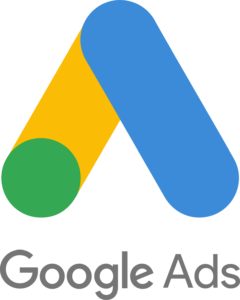
Why Choose Google Ads for App Installs?
- Access to a vast audience across Google Search, YouTube, Google Play, and Display Network.
- AI-powered bidding strategies optimize installs for better engagement.
- Supports Android and iOS apps, making it versatile for all developers.
Key Features:
- Automated ad placement and optimization.
- Smart bidding for cost-effective installs.
- Targeting based on user intent, demographics, and app category.
2. Meta Ads (Facebook & Instagram)

Why Choose Meta Ads?
- Precise audience targeting using demographics, interests, and behaviors.
- Engaging ad formats such as carousel, video, and playable ads.
- Retargeting capabilities to boost user engagement and conversions.
Key Features:
- Cross-platform promotion on Facebook, Instagram, Messenger, and Audience Network.
- AI-based campaign optimization for better ROI.
- Lookalike audiences help find high-quality users similar to existing customers.
3. Apple Search Ads
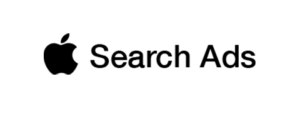
Why Choose Apple Search Ads?
- Ads appear directly in App Store search results, targeting high-intent users.
- Lower acquisition costs due to interest-driven installs.
- Exclusive for iOS apps, ensuring premium quality users.
Key Features:
- Keyword-based targeting for relevant app discovery.
- Cost-per-tap (CPT) and cost-per-acquisition (CPA) bidding.
- High visibility among iOS users looking for apps in similar categories.
4. Snapchat Ads
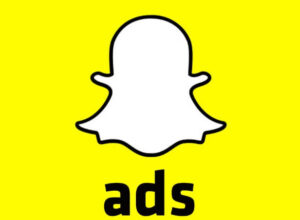
Why Choose Snapchat Ads?
- Perfect for targeting Gen Z and Millennials with engaging AR experiences.
- Cost-effective compared to other social media platforms.
- Seamless app install ads with swipe-up functionality.
Key Features:
- AR Lenses and Filters for immersive engagement.
- Deep linking to drive high-intent app installs.
- Performance tracking via Snap Pixel and App Event Optimization.
5. Twitter Ads
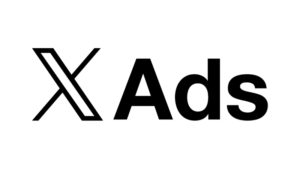
Why Choose Twitter Ads?
- Targets engaged users who follow tech trends and mobile apps.
- App Install Cards make direct downloads easy.
- Promotes apps through tweets, videos, and influencer collaborations.
Key Features:
- Campaigns optimized for app installs, clicks, and engagement.
- Real-time trend targeting for increased visibility.
- Audience segmentation based on conversations and hashtags.
6. Unity Ads (For Gaming Apps)
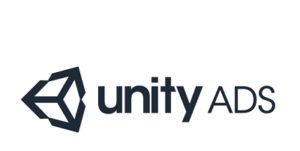
Why Choose Unity Ads?
- Focused on mobile gaming audience.
- Rewarded video ads improve user engagement and retention.
- Monetization options for developers via in-game ads.
Key Features:
- Seamless integration with Unity-built games.
- High CTR (Click-Through Rate) for gaming-related ads.
- Supports in-app purchases and premium user targeting.
7. AdMob (Google’s Mobile Ad Network)

Why Choose AdMob?
- Best for in-app advertising across the Google ecosystem.
- High eCPMs (effective cost per mille) due to Google’s demand-driven system.
- Integrates with Google Analytics for better user insights.
Key Features:
- Supports various ad formats (banners, interstitials, rewarded ads).
- AI-based ad mediation to optimize revenue.
- Cross-promotion for app portfolio management.
8. ironSource (Performance-Based Ad Platform)

Why Choose ironSource?
- Ideal for mobile gaming and non-gaming apps alike.
- Focuses on ROI-driven user acquisition.
- Deep integration with app developers for enhanced monetization.
Key Features:
- Ad mediation and cross-promotion tools.
- AI-driven optimization for user retention.
- Multiple ad formats, including rewarded videos and interstitials.
9. Chartboost

Why Choose Chartboost?
- Best for game developers looking to acquire engaged players.
- Provides direct deals with publishers for better ad placements.
- Self-serve platform with real-time reporting.
Key Features:
- Advanced in-game ad optimization.
- CPI (Cost Per Install) and CPA (Cost Per Action) bidding models.
- Programmatic buying and direct deals for better ad performance.
Conclusion: Choosing the Best App Install Ad Platform
The Top App Install Ad Platforms depends on your target audience, budget, and goals. If you’re looking for broad reach and AI-driven automation, Google Ads and Meta Ads are top choices. For gaming apps, Unity Ads, ironSource, and Chartboost deliver better engagement. Meanwhile and Apple Search Ads work well for niche and trend-based marketing.
To maximize your app’s growth, consider multi-platform strategies, A/B testing ad creatives, and leveraging deep analytics to optimize your campaigns.
By selecting the Top App Install Ad Platforms, you can achieve higher installs, better user engagement, and long-term success in the competitive app market.
by Christopher S. | Jan 17, 2025 | Android App Marketing |
In the intricate dance of public relations, Media Advisory vs Press Release serve as two indispensable tools. While both aim to connect organizations with media outlets and the public, their purpose, structure, and use differ significantly. As PR professionals, understanding these nuances is essential to crafting communications that resonate and drive engagement.
What Is a Media Advisory?
A media advisory is a concise, to-the-point document designed to inform journalists about upcoming events, opportunities, or announcements that merit media coverage. Think of it as an invitation crafted specifically for the press. Its brevity and directness make it ideal for grabbing attention in a fast-paced news cycle.
Key Features of a Media Advisory
- Format and Structure: Media advisories are typically one page long, written in bullet points for quick readability.
- Purpose: They alert media outlets to a specific event, such as a press conference, product launch, or charity drive.
- Audience: The primary recipients are journalists, editors, and news producers.
- Content: It answers the essential who, what, where, when, and why of the event. Contact information is prominently included to facilitate follow-ups.
When to Use a Media Advisory
Media advisories are particularly effective when:
- Inviting press to cover a time-sensitive event.
- Providing advance notice of significant developments.
- Offering photo or interview opportunities.
What Is a Press Release?
A press release, in contrast, is a more detailed communication tool. It serves to deliver a story or announcement to the media and the public, blending newsworthiness with narrative. Unlike media advisories, press releases are often crafted to be published as-is or used as the foundation for broader media stories.
Key Features of a Press Release
- Format and Structure: Typically one to two pages long, press releases follow a structured format, including a headline, subhead, body, and boilerplate.
- Purpose: They provide in-depth information on a specific topic, such as new product launches, organizational milestones, or major partnerships.
- Audience: While primarily directed at media professionals, press releases also target the general public.
- Content: A compelling narrative, enriched with quotes, statistics, and visuals, often distinguishes a strong press release.
When to Use a Press Release
Press releases are suitable for:
- Announcing newsworthy developments.
- Building brand visibility and credibility.
- Generating media and public interest.
Comparing Media Advisories and Press Releases
To truly appreciate their differences, consider the following comparison:
| Aspect |
Media Advisory |
Press Release |
| Purpose |
Event notification |
Storytelling and news dissemination |
| Length |
Short (one page) |
Longer (one to two pages) |
| Format |
Bullet points |
Narrative style |
| Timing |
Before an event |
Before or after an event |
| Audience |
Journalists |
Media and general public |
How to Write an Effective Media Advisory
Crafting a compelling media advisory requires precision and clarity. Follow these steps:
- Craft a Catchy Headline: Use action verbs to make the headline attention-grabbing.
- Include Key Details: Clearly state the event’s who, what, where, when, and why.
- Use Bullet Points: Organize information for quick and easy scanning.
- Add Contact Information: Ensure journalists know whom to contact for more details.
- Keep It Brief: Limit the advisory to one page, focusing only on essential details.
How to Write an Outstanding Press Release
Press releases demand a more nuanced approach. Here’s how to craft one that stands out:
- Start with a Strong Headline: Your headline should succinctly convey the news and its significance.
- Write an Engaging Lead: The opening paragraph must capture the essence of the story.
- Provide Context: Explain the significance of the news with relevant details and background.
- Include Quotes: Add depth and perspective with quotes from key stakeholders.
- End with a Boilerplate: Summarize your organization’s mission and relevance at the end.
Choosing the Right Tool for the Job
The decision to use a media advisory or a press release depends on your goals:
- If your aim is to attract journalists to an event, go with a media advisory.
- For sharing in-depth information with the public, opt for a press release.
Maximizing the Impact of Your PR Efforts
To ensure your media advisory or press release achieves its intended purpose:
- Understand Your Audience: Tailor your message to resonate with your recipients.
- Leverage Digital Tools: Distribute your communications via email, social media, and PR distribution platforms.
- Follow Up: Personal outreach to journalists can significantly enhance your chances of coverage.
In today’s crowded media landscape, the ability to discern and deploy the right PR tool is a hallmark of professional excellence. By mastering the distinctions between media advisories and press releases, you can amplify your message, forge stronger media relationships, and leave a lasting impact.
FAQs
What is the main difference between a Media Advisory vs Press Release?
A media advisory is a brief, targeted document aimed at alerting journalists to an event, while a press release provides in-depth information on a specific topic for both media and the public.
Can a media advisory be used in place of a press release?
No, each serves a distinct purpose. Media advisories are used for event invitations, whereas press releases are for storytelling and detailed announcements.
How long should a media advisory be?
A media advisory should ideally be one page long, providing only the essential details.
What makes a press release effective?
A strong press release has a compelling headline, engaging lead, relevant details, impactful quotes, and a clear call-to-action or contact information.
Should a press release include visuals?
Yes, adding visuals such as images or videos can make your press release more engaging and increase the likelihood of media coverage.
Conclusion
The interplay of Press Release is a cornerstone of successful public relations strategies. By understanding their unique strengths and appropriate applications, PR professionals can craft messages that resonate, ensuring effective communication with both media and the public. The mastery of these tools not only elevates your organization’s visibility but also establishes its credibility in a competitive landscape. Contact Us for more Details!!
by Christopher S. | Jan 8, 2025 | Android App Marketing |
Introduction
For anyone with an app idea or requirement, choosing the right partner to bring your vision to life is critical. Hiring an Android app agency ensures your project is developed, launched, and marketed successfully. Android apps are a better choice than websites when it comes to user experience, engagement, and functionality.
Why Apps Are Better Than Websites
While websites are essential for providing general information, apps deliver a more immersive and tailored experience. Apps can work offline, use device features like GPS and camera, and offer push notifications to keep users engaged.
- Apps provide a faster and smoother experience.
- They can leverage device capabilities for enhanced functionality.
- Users spend more time on apps than websites, making apps ideal for retention.
The Android App Ecosystem and Market
The Android ecosystem is vast, with over 2.7 billion active devices globally. As of 2024, the Google Play Store hosts over 3.5 million apps, making Android the dominant platform for app development.
Key statistics:
Market Share: Android holds over 70% of the global mobile operating system market.
User Base: Active users span diverse demographics and regions, from urban to rural markets.
Revenue Potential: Android apps generated $47.9 billion in revenue in 2023 alone, showcasing immense profitability.
Two Key Partners: Android App Development and Marketing Agencies
When developing and promoting your app, two partners play a crucial role:
1. Android App Development Agency:
- These agencies specialize in designing, developing, and testing Android apps. They ensure high-quality code, intuitive user interfaces, and compatibility across a wide range of devices.
- They also offer post-launch support, ensuring that your app remains updated and functional.
2. Android App Marketing Agency:
- Once your app is developed, marketing agencies help in reaching the right audience. They handle app store optimization, social media campaigns, and user acquisition strategies.
- These agencies ensure your app gains visibility, downloads, and user retention.
Why Connecting with Good Partners is Important
Partnering with the right agencies guarantees expertise, reliability, and scalability. A good Android app agency can:
- Turn your idea into a feature-rich, functional product.
- Provide insights into market trends and user behavior.
- Save time and resources by avoiding common pitfalls.
When to Hire and When Not to Hire Freelancers
Freelancers can be a cost-effective option for small, straightforward projects but may lack the scalability and reliability of an agency.
When to Hire Freelancers:
Small-scale apps with limited features.
When you have in-house expertise to manage the project.
When Not to Hire Freelancers:
For large-scale, complex projects requiring diverse expertise.
When continuous development and post-launch support are critical.
If project timelines are tight and require a collaborative approach.
Focusing on Continuous Development and Partnering with the Right Agency
App development doesn’t end with the launch. Continuous updates, feature enhancements, and bug fixes are essential for maintaining user satisfaction. A reliable Android app agency offers ongoing support, ensuring your app evolves with market trends and user expectations.
Agencies provide a collaborative team of experts.
They offer structured processes and accountability.
Partnering ensures long-term success compared to the ad-hoc nature of freelancers.
Closing Note
Hiring the right Android app agency is a vital step toward turning your app idea into a thriving product. With expertise in development and marketing, these agencies provide the tools and support needed to succeed in the competitive app market. Contact our agency today to bring your Android app vision to life and ensure its lasting success.









